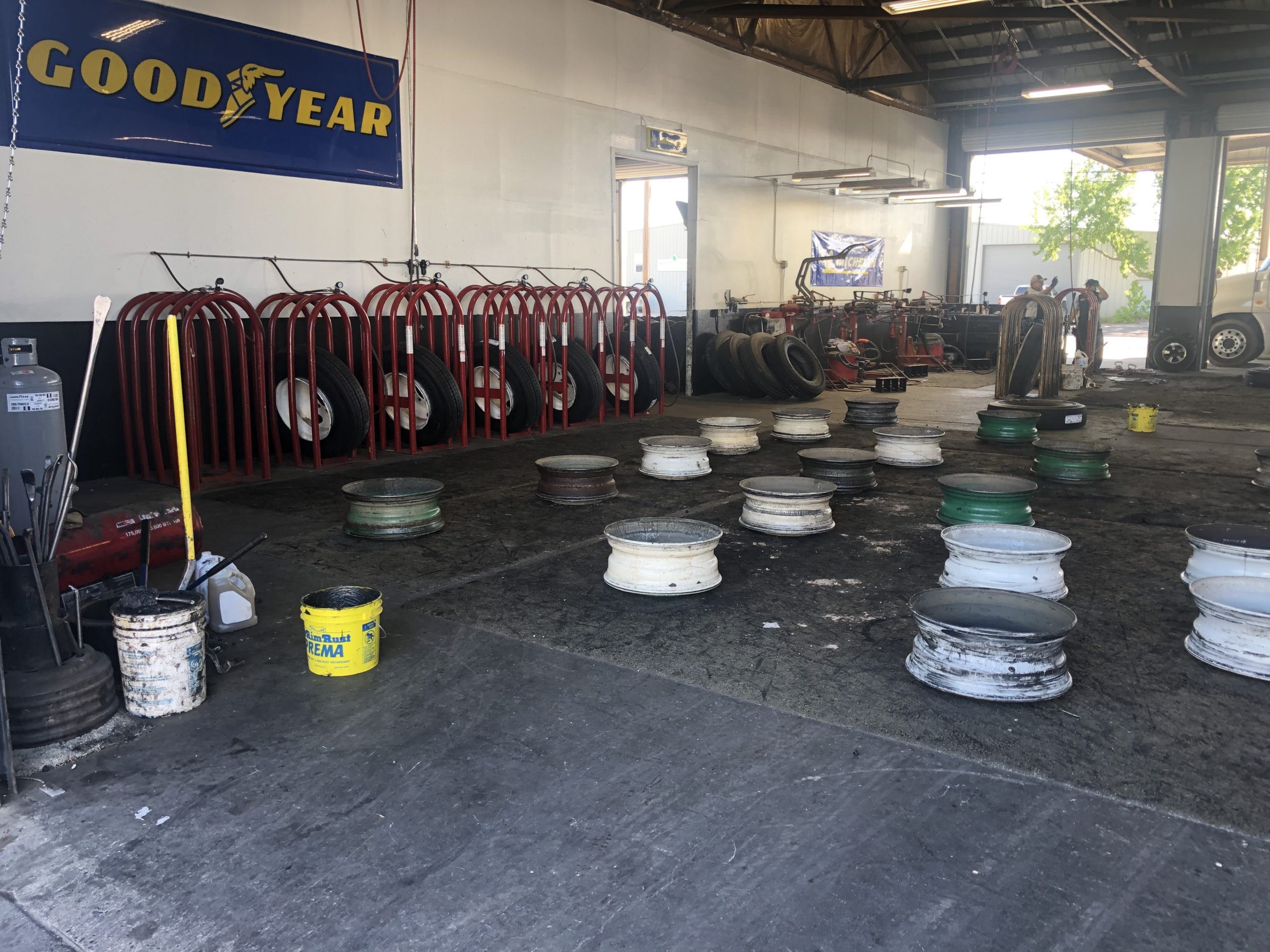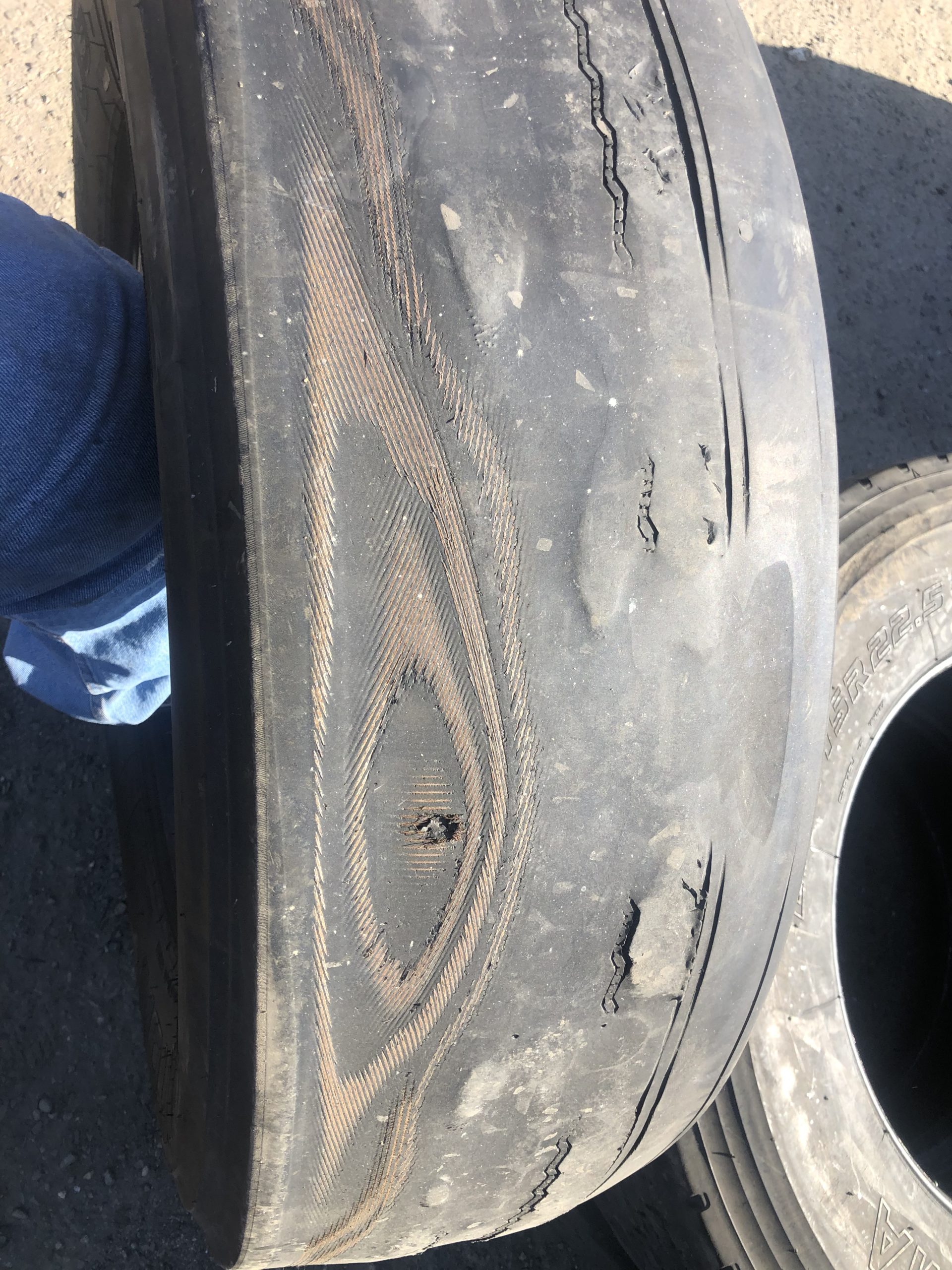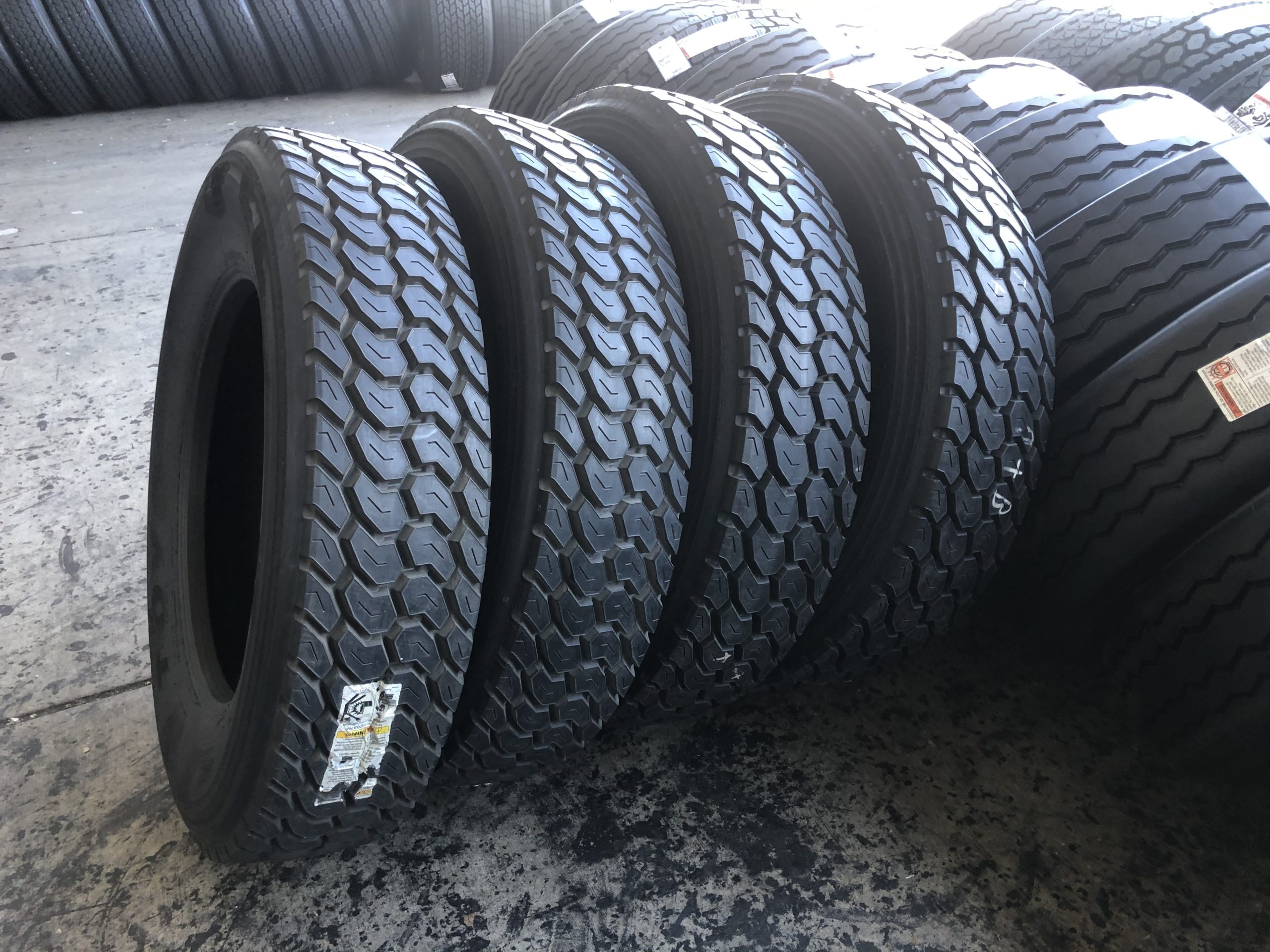There is an amount of flexing that is expected and completely healthy for a truck tire to do. Although this High Flex Zone may limit the truck tire’s repair-ability, it doesn’t make the tire unsafe to repair or retread and reuse.
As air pressure decreases however, the flexing in the sidewalls increases. Increase in load on the tire increases sidewall flex too. There is an amount of sidewall flexing that renders the truck tire unsafe to reuse. Enter the “Zipper Rupture”. Zipper Ruptures are tire failure conditions where the radial cables in a radial tire’s body ply are ripped open during inflation and leave a tire’s high sidewall looking like an unzipped jacket. Zipper ruptures are loud, violent, and potentially injurious to the servicing technician.
Zipper ruptures are however completely unnecessary and avoidable. The steps to avoid zipper ruptures are as follows:
- FOR DRIVERS – Buy an Air Gauge and use it – quality truck tire air gauges are available for less than 10$ and can keep you from unknowingly putting 500 miles on an under-inflated truck tire. Flow-through “gator caps” for your valve stems can make air checks faster and more convenient.
You may be thinking; “I don’t need an air gauge, I’ve got eyes and I can tell a wheel sittin’ on the ground from one on an inflated tire!” – In response to this, I’d like to share a story from my personal experience. I decided I had to have a classic old Ford 4wd that I found on Ebay Motors for sale in neighboring Medford Oregon. Not knowing what I was doing, I took the seller at his word when he said, “runs good”, and rented a car one way, drove to Medford, pointed the 49 years old Ford at Modesto and started driving. Below is a picture of what it looked like when the wife and I got it in Oregon:

We blew a radiator hose in Redding, and got it towed most of the rest of the way. After I repaired the hose, the belt, and the exhaust manifold that overheating it cracked, I took it to the local CHP to have it inspected and the VIN verified. The officer passed the truck but warned:
“You need new tires dude!”
“Yeah I know they’re worn out but the best price I could find/”
He interrupted – “They’re flat! You can tell by looking at ‘em!”
Now, I don’t know about you, but I sure couldn’t tell by looking at those tires, that one of them, was at 0 PSI! After I got new tires, the truck steered as if it had power steering, ran as if the engine was rebuilt, and didn’t want to stop as if you stood on the brakes when let off the accelerator.
Truth be told, I still hadn’t learned my lesson, that is, bought myself an air gauge. I was just figuring I was on new tires now and those other issues were in the past. The truck started to revert to its old difficulty of steering, the fuel economy went back down, and it wasn’t quite as peppy. I took it to the air filler stand at the local gas station and looked at the gauge. One of the new tires was down to 0 again! So now I have to go back and see if they have the valve stems I need in stock at the tire shop, but I also purchased an air gauge so that I don’t go any further than to the service station when my new tires are low on air.
The moral of the story is that looks can be deceiving when it comes to the amount of air in your tires. My old ford has remarkably stiff sidewalls in the 33*12.50r16.5’s that the previous owner chose. I looked at them and thought “they might be low”, but I never would have guessed that one was as low as 0 PSI, totally flat! But it certainly was, It takes a long time to air a tire up from 0 with the gas station free air!
The guys that are repairing your truck tires need to know what they’re dealing with. Manufacturers of the toughest tires available such as Goodyear keep on engineering more and more resiliency into their truck tire casings. They engineer them to dissipate heat so that they don’t age out. One thing about having such resilient material is that it becomes very difficult to see if the body plies have been over-folded from having been ran underinflated. In most cases, excessive folding leaves a tell tale ring of darkened rubber either inside or outside of the casing, and blisters can be felt in the sidewall too. But over the course of the last 6 months a rash of stealth zippers has made it through service depots and retread shops undetected.
- For Technicians – Use Chalk – Technicians need to use an air gauge as well, but they also need to mark the sidewall with a paint stick when they have a potentially damaged casing. Tires that have been run miles at 50% air pressure probably should just as well not be submitted for retreading. As a Murhpy’s Law antedote, mark ran flat tires as such with paint stick.
- Use a safety cage – always use safety cage when inflating a truck tire
- Use an extension – An extension allows you to air up a tire without being right where the air would be shooting out should a zipper rupture occur. If you begin to hear popping like a pop-corn popping, pull the air off the tire and let it blow down.
Thanks for reading!






